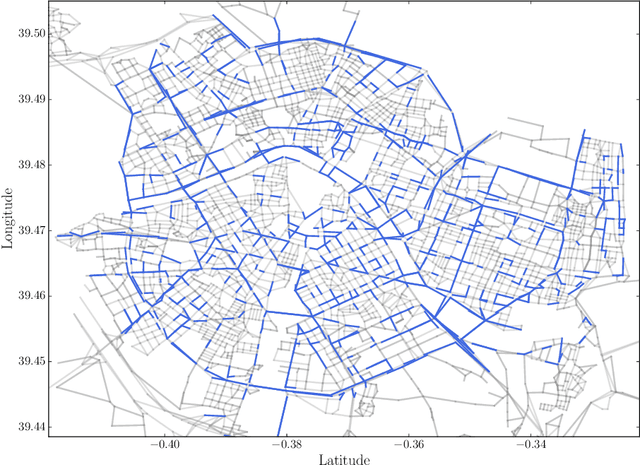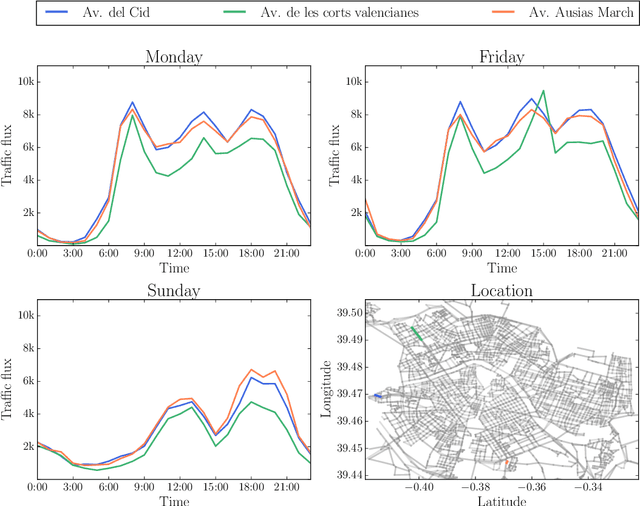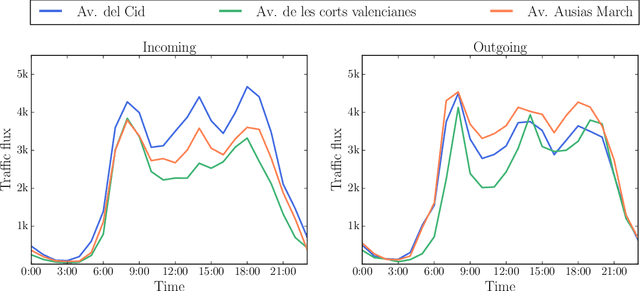Predicting the traffic flux in the city of Valencia with Deep Learning
Paper and Code
Oct 04, 2022



Traffic congestion is a major urban issue due to its adverse effects on health and the environment, so much so that reducing it has become a priority for urban decision-makers. In this work, we investigate whether a high amount of data on traffic flow throughout a city and the knowledge of the road city network allows an Artificial Intelligence to predict the traffic flux far enough in advance in order to enable emission reduction measures such as those linked to the Low Emission Zone policies. To build a predictive model, we use the city of Valencia traffic sensor system, one of the densest in the world, with nearly 3500 sensors distributed throughout the city. In this work we train and characterize an LSTM (Long Short-Term Memory) Neural Network to predict temporal patterns of traffic in the city using historical data from the years 2016 and 2017. We show that the LSTM is capable of predicting future evolution of the traffic flux in real-time, by extracting patterns out of the measured data.
 Add to Chrome
Add to Chrome Add to Firefox
Add to Firefox Add to Edge
Add to Edge